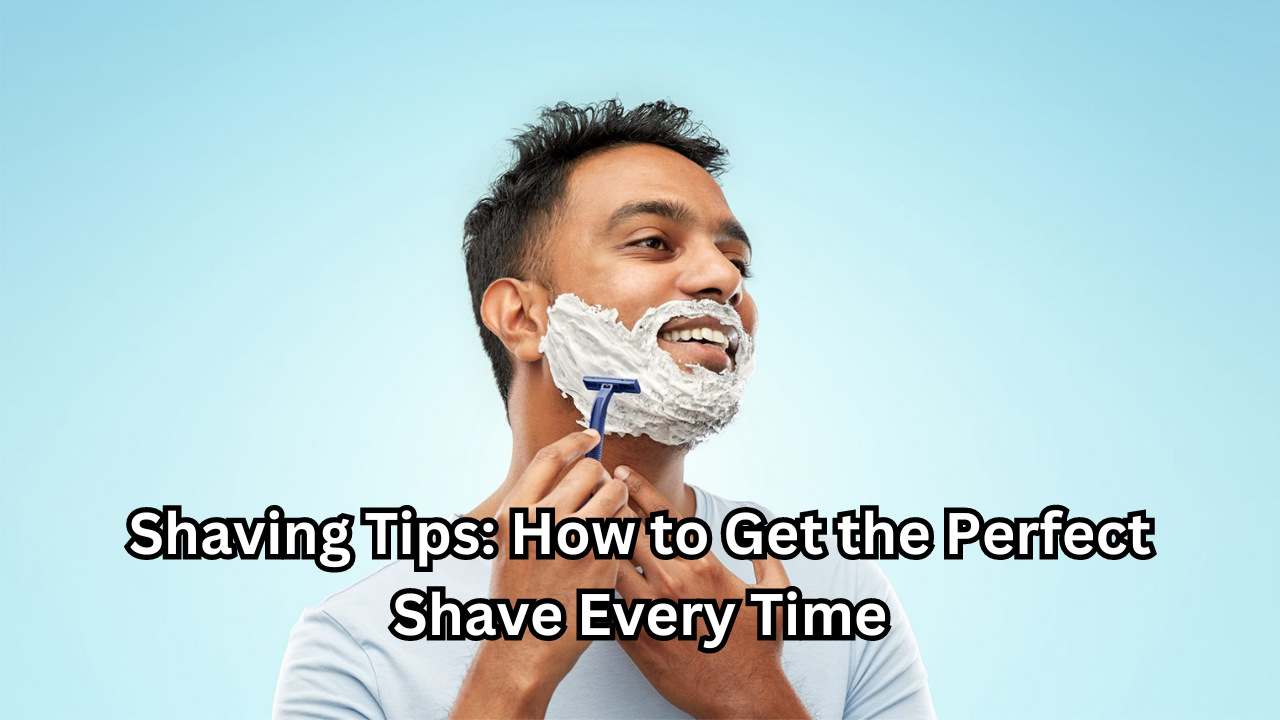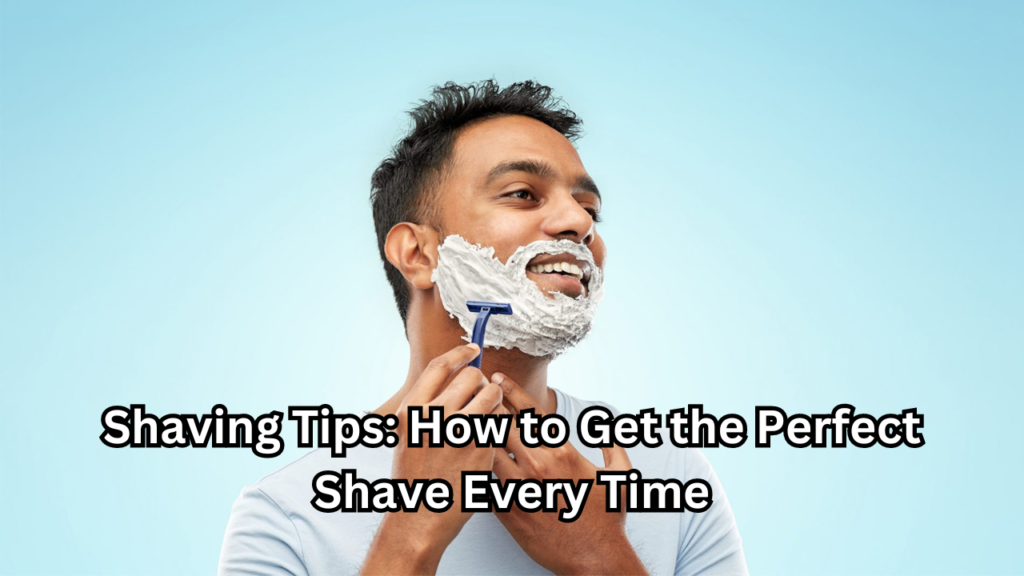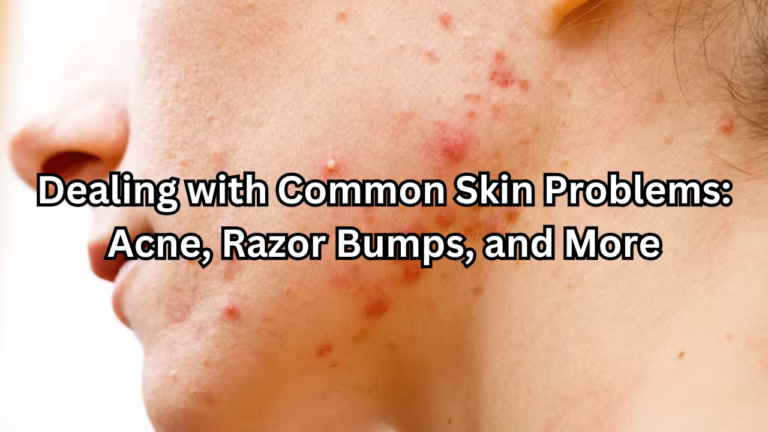

Introduction
Shaving Tips, a well-executed shave can transform not just your appearance but also your confidence and comfort. The importance of achieving a clean, close shave goes beyond mere aesthetics; it plays a crucial role in grooming and personal care. A smooth shave can enhance your professional image, elevate your self-esteem, and provide a refreshing sense of cleanliness that lasts throughout the day.
In this article, we’ll delve into the various aspects of shaving that contribute to a perfect shave. We’ll explore the benefits of a close shave, including improved skin health and enhanced facial appearance. Additionally, we’ll provide a comprehensive overview of the best techniques, tools, and products to achieve a flawless shave every time. Whether you’re a seasoned shaver or just starting out, this guide will offer valuable insights to elevate your shaving routine.
Preparing for the Shaving Tips
Achieving a flawless shave begins long before the razor touches your skin. Proper preparation is key to ensuring a smooth and irritation-free shave. Here’s how you can set the stage for the perfect shave:
Choosing the Right Shaving Cream/Gel
Selecting the right men shaving cream or gel is crucial for a comfortable shave. Consider factors such as your skin type, fragrance preferences, and the texture of the product. If you have sensitive skin, opt for creams or gels specifically formulated to reduce irritation and redness. For those with dry skin, moisturizing products that provide extra hydration can be beneficial. Additionally, the scent of the shaving cream can enhance your shaving experience, so choose a fragrance that you find pleasant and invigorating.
Pre-Shaving Tips Routine
A thorough pre-shave routine can make a significant difference in the quality of your shave. Begin by cleansing your face to remove dirt, oil, and impurities. This helps prevent clogged pores and reduces the risk of breakouts. Follow this with exfoliation to slough off dead skin cells, which can otherwise lead to an uneven shave or ingrown hairs. Regular exfoliation ensures a smoother surface for your razor to glide over, resulting in a closer and more comfortable shave.
Hydrating the Skin
Hydrating your skin is a vital step in preparing for a shave. Use warm water to soften your facial hair and open up the pores. This process makes the hair easier to cut and reduces the likelihood of razor burn or nicks. A warm shower or a hot towel applied to your face for a few minutes can help in achieving optimal hydration and preparation. The combination of warmth and moisture will create an ideal environment for a smooth and effective shave.
Selecting the Right Tools
Choosing the right tools is essential for achieving a clean, comfortable shave. Each type of shaving tool offers distinct advantages and can significantly impact the quality of your shave. Here’s what you need to know about selecting the best tools for your grooming routine:
Types of Razors
- Safety Razors: These razors are known for their precision and control. They feature a single blade enclosed in a protective guard, reducing the risk of cuts and irritation. Safety razors are ideal for those who prefer a traditional shaving experience and are willing to invest a bit of time mastering their technique.
- Cartridge Razors: Cartridge razors are popular for their convenience and ease of use. They come with multiple blades that provide a close shave with minimal effort. They are great for everyday use and are suitable for those who prioritize speed and efficiency in their grooming routine.
- Straight Razors: Often associated with barbershops and classic shaving, straight razors offer an exceptionally close shave. They require skill and practice to handle properly but can deliver superior results when used correctly. Straight razors are a good choice for those who enjoy the ritual of shaving and are looking for a precise, smooth finish.
- Electric Razors: Electric razors provide a quick and convenient shaving option. They are suitable for both wet and dry shaving and can be a good choice for individuals with busy schedules. While they may not offer the same closeness as traditional razors, they are efficient and reduce the risk of nicks and cuts.
Quality of Razor Blades
The sharpness and cleanliness of your razor blades are crucial for a smooth shave. Dull or dirty blades can lead to irritation, razor burn, and an uneven shave. Invest in high-quality blades that maintain their sharpness and are designed for your specific razor type. Replace blades regularly to ensure optimal performance and to avoid potential skin issues.
Shaving Brushes
Using a shaving brush can enhance your shaving experience in several ways. A good shaving brush helps create a rich lather from your shaving cream or soap, which can improve the glide of the razor and reduce friction on your skin. Brushes also help exfoliate the skin and lift the hairs, making them easier to cut. Additionally, the bristles of the brush can stimulate blood flow to the face, contributing to a healthier and more invigorated complexion.
Shaving Techniques
Mastering the art of shaving involves more than just choosing the right tools; it requires proper technique to ensure a smooth, irritation-free experience. Here are some essential techniques to help you achieve the best results:
Shaving with the Grain
Shaving with the grain—meaning in the direction of hair growth—can significantly reduce irritation and provide a more comfortable shave. When you shave in the direction your hair grows, the razor blade cuts the hair more easily and minimizes the risk of razor burn and ingrown hairs. To determine the direction of hair growth, run your hand over your face and note the way the hair feels. Shave in this direction for a smoother, more even finish.
Avoiding Common Mistakes
- Not Pressing Too Hard: One of the most common mistakes is applying too much pressure with the razor. Let the weight of the razor do the work, and use gentle strokes. Pressing too hard can lead to irritation, nicks, and cuts. A light touch ensures a closer shave without compromising skin comfort.
- Not Rushing the Process: Take your time during each shave to ensure you’re covering all areas thoroughly and with care. Rushing can result in missed spots, uneven patches, and increased risk of irritation. Allow yourself enough time to go through each step of the shaving process methodically.
Handling Sensitive Areas
- Neck: The skin on your neck is often more sensitive than other areas of your face. To shave your neck effectively, stretch the skin slightly by tilting your head back or to the side. Use gentle, short strokes and avoid going over the same area multiple times to prevent irritation. Shaving with the grain is particularly important in this area to reduce discomfort.
- Jawline: The jawline can be challenging due to its contours. To navigate this area, use light pressure and adjust the angle of the razor as needed to follow the natural curves of your jaw. Consider using a mirror to better see and reach difficult spots. A shaving brush can help lift the hair and create a lather that cushions the razor, making the process smoother.
Post-Shave Care
Proper post-shave care is crucial for maintaining healthy skin and ensuring that your shave remains comfortable throughout the day. Here’s how to take care of your skin after shaving:
Rinsing and Drying
- Rinsing the Face: After shaving, rinse your face with cool water to close the pores and remove any remaining shaving cream or gel. This helps to soothe the skin and minimize the risk of irritation. Avoid using hot water as it can further irritate the skin and strip away natural oils.
- Drying the Face: Gently pat your face dry with a clean, soft towel. Avoid rubbing, as this can cause additional irritation and discomfort. Allow your skin to air dry completely before applying any post-shave products. Additionally, rinse your razor thoroughly to remove any hair and shaving cream. Store it in a dry place to prevent rust and prolong its lifespan.
Aftershave Products
- Choosing the Right Aftershave: Applying an aftershave product is essential for calming and hydrating your skin after shaving. Look for products that contain soothing ingredients such as aloe vera, witch hazel, or chamomile. These ingredients help to reduce redness and irritation while providing hydration.
- Moisturizers: If you prefer a moisturizer over an aftershave, choose one that is alcohol-free to avoid drying out your skin. A good moisturizer will help replenish lost moisture and create a protective barrier on the skin. Opt for products with ingredients like hyaluronic acid or glycerin for optimal hydration and skin care.
Dealing with Razor Burn
- Prevention Tips: To prevent razor burn, ensure that your razor blades are sharp and clean. Shave with a gentle hand and avoid going over the same area multiple times. Use a high-quality shaving cream or gel to reduce friction and irritation. Always shave with the grain and avoid using dull blades.
- Treatment Tips: If you do experience razor burn, apply a soothing aftershave or moisturizer containing anti-inflammatory ingredients. Aloe vera gel or hydrocortisone cream can help alleviate discomfort and redness. If irritation persists, consider using a cold compress to reduce inflammation and provide relief. Additionally, avoid shaving over irritated areas until they have healed.
Maintaining Your Razor
Proper maintenance of your razor is essential for ensuring a smooth, effective shave and prolonging the life of your grooming tools. Here’s how to keep your razor in optimal condition:
Cleaning and Drying
- Cleaning the Razor: After each shave, thoroughly rinse your razor under warm water to remove hair and shaving cream residue. This helps prevent buildup that can dull the blades and affect performance. For a deeper clean, use a brush or a small, soft toothbrush to dislodge any debris from between the blades. Avoid using harsh chemicals or abrasive materials, as these can damage the razor.
- Drying the Razor: After rinsing, ensure your razor is completely dry before storing it. Gently shake the razor to remove excess water and then pat it dry with a clean towel. Proper drying helps prevent rust and prolongs the life of the blades. Store your razor in a dry, well-ventilated area to keep it in top condition.
Replacing Blades
- Knowing When to Replace Blades: Regularly replacing your razor blades is crucial for maintaining a close and comfortable shave. Dull blades can tug at the hair and cause irritation, leading to an uneven shave. Replace the blades when you notice any signs of dullness, such as increased resistance or discomfort during shaving. For safety razors and cartridge razors, follow the manufacturer’s recommendations for blade replacement intervals.
- Signs That Blades Need Replacing: If you experience increased razor burn, difficulty achieving a close shave, or noticeable pulling and tugging, it’s time to replace the blades. Additionally, if you see any visible rust or corrosion on the blades, it’s best to replace them immediately to avoid skin irritation and potential infection.
Troubleshooting Common Shaving Issues
Ingrown Hairs
Ingrown hairs are a common issue that occurs when hair grows back into the skin instead of out of the follicle. This can be caused by shaving too closely, using dull blades, or shaving against the grain. Ingrown hairs typically manifest as small, red bumps and can cause irritation or even infection if not properly managed. To prevent ingrown hairs, avoid shaving too close to the skin and ensure your blades are sharp and clean. Shaving with the grain and using a gentle, moisturizing shaving cream can also help reduce the risk. Regular exfoliation of the skin will remove dead skin cells and help prevent hairs from becoming trapped under the surface.
Nicks and Cuts
Nicks and cuts are unfortunate but common occurrences during shaving, often resulting from using a dull blade or applying too much pressure. To treat nicks and cuts, immediately rinse the area with cool water to clean and soothe the skin. Applying a styptic pencil or gentle antiseptic can help stop bleeding and reduce the risk of infection. Follow up with an aftershave balm containing soothing ingredients like aloe vera to calm the skin and promote healing. To prevent these issues, use a sharp, clean razor and avoid pressing too hard. Shave with light strokes and ensure your skin is properly hydrated before starting. Proper technique and maintenance of your shaving tools can significantly reduce the likelihood of nicks and cuts.
Conclusion
Shaving Tips, achieving the perfect shave involves a combination of the right tools, techniques, and post-shave care. By selecting appropriate razors, blades, and shaving products, you can enhance the quality of your shave and minimize common issues such as irritation and ingrown hairs. Proper preparation and technique, including shaving with the grain and using gentle pressure, are key to a smooth and comfortable shave. Post-shave care, including proper rinsing, drying, and the use of soothing products, further contributes to healthy, well-maintained skin.
To develop a shaving routine that works for you, start by experimenting with different products and techniques to find what best suits your skin type and personal preferences. Consistency is key, so establish a routine that incorporates all the essential steps from preparation to post-shave care. Regularly assess your routine and make adjustments as needed to address any issues or improvements. With practice and attention to detail, you can achieve a shave that not only looks great but feels comfortable and refreshing.





